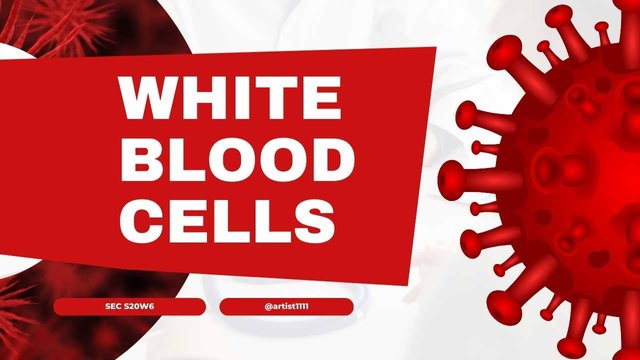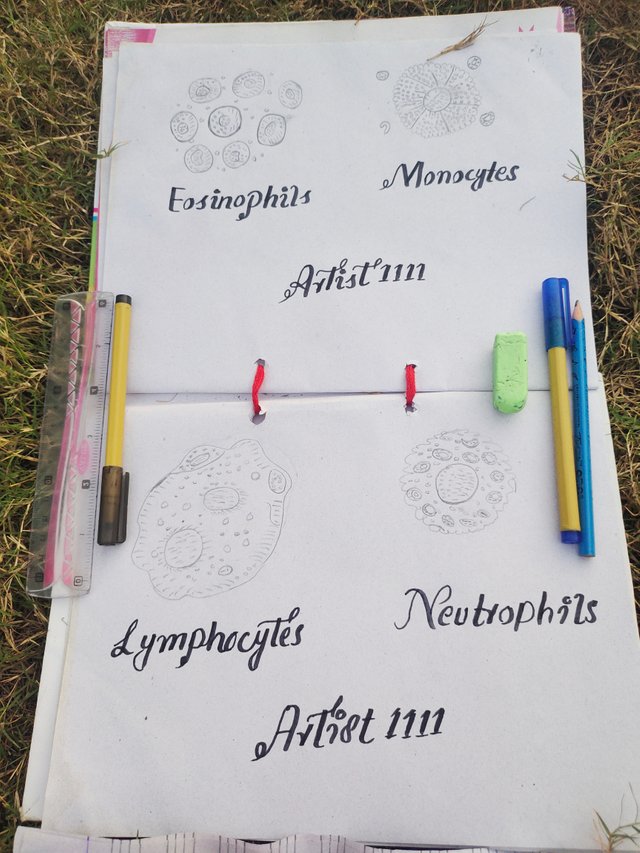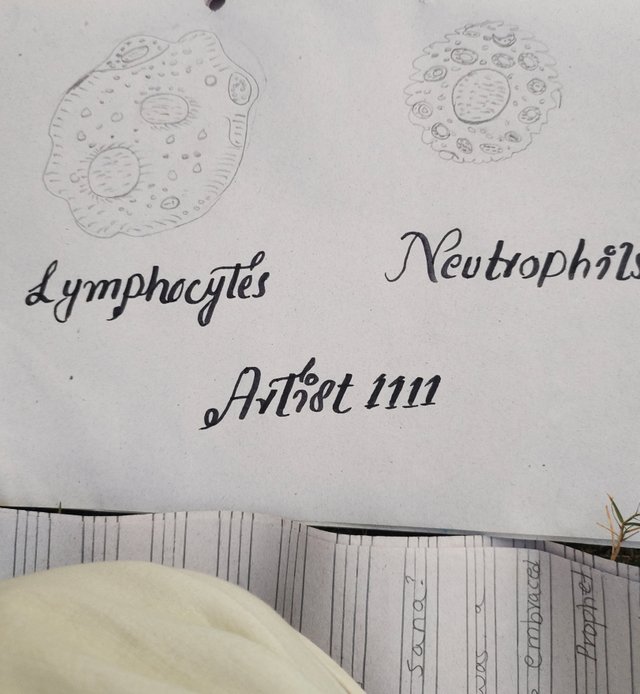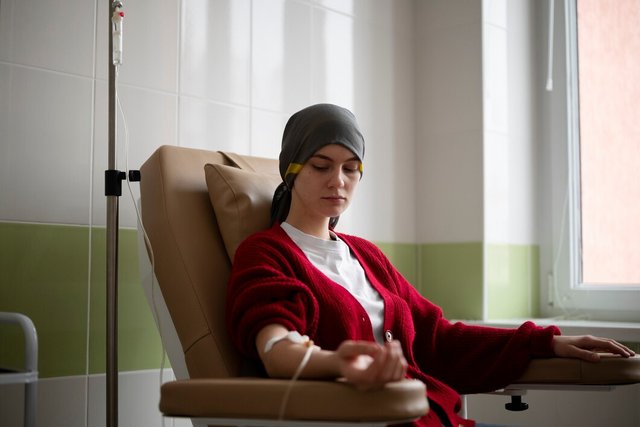SEC S20W6 || Hematology [White Blood Cells - Module 6]
 Canvas Work
Canvas WorkThese little soldiers are called white blood cells, or WBC for short. They patrol and protect us against most infections; they aren't like red blood cells that just transport oxygen. And these guys here are actually the body's defense unit. They can fight off bacteria, viruses, or even parasitic infections.
There are different kinds of WBCs, each with their own special role: first responders are the neutrophils, eosinophils are basically in charge of allergies and parasites, and the planners are the lymphocytes that take care of long-term defense strategies.
When WBCs fall below normal, it's called leukopenia; in other words, your defense force is a little short. When they are above the normal level, that's leukocytosis-your body is bringing in extra troops.
These cells work silently in the background and come into action whenever there is a malfunction in your body to make your body fighting fit again!
The next time you get a feverish disease, thank those white blood cells doing the heavy lifting behind the scene!
 Combine diagram Combine diagram |
|---|
 |  |
|---|
 |  |
|---|
Neutrophilia vs. Neutropenia |
|---|
Neutrophilia vs. Neutropenia
Neutrophilia
This is called neutrophilia, and the term used in the description of the condition of having more than the number of neutrophils that is ordinary. One of the white blood cells the body deploys in the struggle against removing bacteria and inflammation is the neutrophil, and it so happens that this is the most common of those cells in that group. This body fights more virulent invaders by producing more of these cells to defeat furthered inflammation or infections.
Causes of Neutrophilia:
- Bacterial infections (e.g., pneumonia, appendicitis)
- Inflammation due to tissue injury or trauma
- Chronic stress
- Use of certain medications like corticosteroids
- Smoking
- Chronic inflammatory diseases like rheumatoid arthritis
- Leukemia or other blood disorders
Neutropenia
Neutropenia is that medical condition defined by an abnormally low count of neutrophils. This makes the immunity of a body weak in such conditions, thereby making it harder to fight any infections internally in the human body. This disease can come in degrees or stages, ranging from mild level to extreme ones. As discussed early, more serious risk varies with the severity of the depletion of neutrophil count.
Causes of Neutropenia:
- Viral infections (e.g., HIV, hepatitis)
- Chemotherapy or radiation therapy for cancer treatment
- Bone marrow disorders like aplastic anemia
- Autoimmune diseases (e.g., lupus)
- Certain medications (e.g., antibiotics, antipsychotics)
- Malnutrition (especially B12 and folate deficiency)
- Congenital disorders affecting neutrophil production
Difference, Neutrophilia vs. Neutropenia
| Neutrophilia | Neutropenia |
|---|---|
| High neutrophil count | Low neutrophil count |
| Commonly caused by bacterial infections, stress, inflammation | Commonly caused by viral infections, autoimmune diseases, cancer treatments |
| Often a sign of infection or inflammation | Increases risk of infections due to weakened immune system |
| May require treatment if due to underlying disorders like leukemia | May require treatments like antibiotics, growth factors, or addressing the underlying cause |

Case study: Chronic Myeloid Leukemia (CML) – A disease of white blood cells
Chronic Myeloid Leukemia is one kind of cancer from the WBCs, which pains the part of the bone marrow cells producing granulocytes, & a type of WBC. Granulocytes are divided into three categories: neutrophils, eosinophils, & basophils. This disease results in an excessive number of abnormal White Blood Cells.
Let us trace this case step by step related to the white blood cell series to determine how it affects the body.
Presentation of Patient:
A 45-year-old man presented with an illness characterized by persisting fatigue & weight loss for several months. He had night sweats & a sensation of fullness in the abdomen several months prior to this. Examination showed splenomegaly.
Diagnostic Tests:
- Complete Blood Count : in the patient with CBC, it is leukocytic in nature and the patient has neutrophils as well as basophils rise thus myeloproliferation is indicated.
- Differential White Cell Count:
- Neutrophils: Increased (Neutrophilia)
- Eosinophils: slightly raised (Eosinophilia)
- Basophils: Evident increase (Basophilia)
An overabundance of these cells in the blood would indicate an inappropriate response from the bone marrow.
- Bone Marrow Biopsy: The bone marrow biopsy was hypercellular with an increased cell population, majorly granulocytes & its precancerous form called blasts; these results confirmed the overproduction of white blood cells.
- Cytogenetic Studies: Subsequent studies verified that the patient was harboring a Philadelphia chromosome secondary to a translocation between chromosomes 9 and 22. This is now recognized as an established feature of CML.
Understanding of the Case:
This caused an overproduction of neutrophils, eosinophils, and basophils in the bone marrow and led to increased numbers of these cells appearing in the blood. The abnormal proliferation is triggered by a mutation in the bone marrow stem cells caused by the Philadelphia chromosome. CML typically progresses slowly initially (chronic phase), but it can move on into an accelerated or the blast phase if left untreated and becomes drastically life-threatening.
Symptoms Explained:
- Fatigue & weight loss: Contributed by over working of the body organs & that is occasioned by the overproduction of abnormal cells.
- Splenomegaly: The spleen increases in size due to the efforts made to remove abnormal blood cells.
Seen with chronic infections or malignancies, for example, CML; common feature of night sweats and fever.
Treatment and Management:
Tyrosine Kinase Inhibitors (TKIs): Drugs like imatinib target the abnormal protein produced by the Philadelphia chromosome, impairing the overproduction of white blood cells.
Follow-up: The investigations on blood tests and bone marrow assessments are repeatedly conducted to check the patient's trend after treatment.
Prognosis : A patient diagnosed with CML can lead a normal healthy life with appropriate treatment, while he or she, without proper treatment, will pass through an aggressive clinical phase.
This case of CML describes the role undertaken by white blood cells in normal immune activities and the disease condition. Overproduction of granulocytes such as neutrophil, eosinophil, and basophil is the hallmark of this disease, showing how abnormalities within the white blood cell series contribute considerably to severe diseases.

Adieu, folks!
May the winds of fortune
carry you to greatness!
May the winds of fortune
carry you to greatness!
Upvoted. Thank You for sending some of your rewards to @null. It will make Steem stronger.
This is a very important thing to know about the immune system of the human body! You have presented the topic wonderfully. Good luck for the contest.
Hello dear friend. Its my pleasure of reading your entry about the almighty white blood cells. These are the unsung heroes of our immune of which most people tend to ignore this delicate part of our health wellbeing.
There are different sibblings of the white blood cells and fortuantely all are different and have different roles to play in our wellheing. The normal count of WBC in the body is from 4,000 to 11,000 per microliter of blood. If there is an increase or decrease in this count a health issue involving the blood is likely to occur.
Also i love your diagram so much and your way of presenting them .
Thanks for sharing
Thank you So much @damithudaya for support